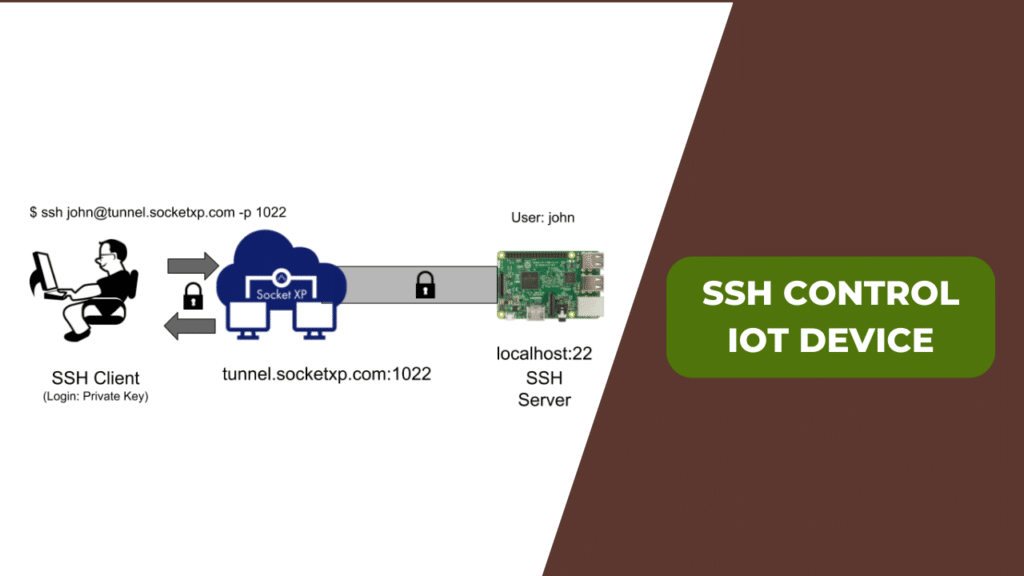The Internet of Things (IoT) has transformed the digital landscape, embedding connectivity into everyday objects, from smart thermostats to industrial sensors. However, this interconnectedness introduces significant security challenges, with Secure Shell (SSH) vulnerabilities posing a critical threat. SSH, a protocol widely used for remote administration and secure data transfer in IoT devices, becomes a gaping vulnerability when not properly secured. This issue is not merely technical but a matter of public safety and economic stability, as compromised IoT devices can disrupt operations, steal sensitive data, or cause physical harm.
The IoT environment is vast and diverse, often characterized by devices with limited processing power and memory, making robust security measures challenging to implement. Many IoT devices ship with default SSH credentials that remain unchanged by users, providing an easy entry point for attackers. Weak cryptographic algorithms and outdated SSH implementations are also common, further exacerbating vulnerabilities. The distributed nature of IoT deployments complicates security management and monitoring, necessitating a multi-faceted approach to secure SSH access. This includes strong authentication, encryption, access control, and regular security audits.
| Category | Information |
|---|---|
| Name | Dr. Alistair Murdoch |
| Field of Expertise | IoT Security, SSH Vulnerabilities, Network Security |
| Current Affiliation | Principal Security Consultant, CyberTech Solutions Ltd. |
| Education | PhD in Computer Science, University of Cambridge MSc in Information Security, University of Oxford BSc in Computer Engineering, Imperial College London |
| Career Highlights |
|
| Professional Memberships |
|
| Contact Information | alistair.murdoch@cybertechsolutions.com |
| Website/Reference | CyberTech Solutions |
The consequences of insecure SSH access in IoT devices are severe. Attackers can gain complete control of devices, using them to launch further attacks on networks or steal sensitive data. Compromised IoT devices can be incorporated into botnets, which are used to launch distributed denial-of-service (DDoS) attacks, overwhelming target systems with traffic. In critical infrastructure, such as smart grids and industrial control systems, compromised IoT devices can disrupt operations and even cause physical damage. High-profile incidents, such as the Mirai botnet, have demonstrated the risks associated with insecure SSH in IoT.
- Mother Warmth 3 Jackerman The Ultimate Guide To Comfort And Style
- Unveiling The World Of Vegamovies 18 Your Ultimate Guide
To mitigate these risks, several best practices should be followed. Strong authentication mechanisms, such as public key authentication and multi-factor authentication, should be implemented to prevent unauthorized access. Default SSH credentials must be changed immediately upon deployment, and users should be encouraged to choose strong, unique passwords. Encryption algorithms should be up-to-date and resistant to known attacks. Access control lists (ACLs) should restrict SSH access to authorized users and devices. Regular security audits and vulnerability assessments should be conducted to identify and address potential weaknesses. Patch management is crucial to remediate known vulnerabilities and keep devices up-to-date with the latest security fixes.
Beyond technical measures, organizational policies and procedures play a critical role in securing SSH access in IoT environments. Security awareness training should educate users and administrators about the risks associated with insecure SSH and the importance of following security best practices. Incident response plans should be in place to detect and respond to security incidents quickly and effectively. Collaboration between device manufacturers, network operators, and security researchers is essential to share threat intelligence and develop effective security solutions. A layered security approach, combining technical controls, organizational policies, and user awareness, is necessary to protect IoT devices from SSH-related attacks.
The future of IoT security depends on addressing the challenges associated with SSH access and other vulnerabilities. As IoT devices become more pervasive and interconnected, the attack surface will continue to expand. Securing SSH in this environment requires a continuous effort to improve security practices, develop new security technologies, and foster collaboration among stakeholders. By prioritizing security and implementing robust security measures, we can harness the benefits of IoT while minimizing the risks associated with cyberattacks.
- Bollyflix Movie Your Ultimate Destination For Bollywood Entertainment
- Whats The Story Behind Kash Patels Eyes Unveiling The Truth
The heterogeneity of IoT devices presents a significant obstacle to unified security management. Different manufacturers employ varying security protocols and configurations, making it difficult to enforce consistent security policies across an entire IoT deployment. Legacy IoT devices, which may no longer receive security updates, pose a particular threat, as they remain vulnerable to known exploits. The lack of standardization in IoT security exacerbates these challenges, hindering interoperability and increasing the complexity of security management.
The supply chain for IoT devices is another area of concern. Many IoT devices are manufactured by third-party vendors, often located in different countries, making it difficult to ensure the security of the entire supply chain. Malicious actors can compromise devices during the manufacturing process, inserting backdoors or other vulnerabilities that can be exploited later. Supply chain attacks can be difficult to detect and remediate, as they occur before the devices are even deployed. Thorough vetting of suppliers and robust supply chain security practices are essential to mitigate these risks.
Data privacy is also a major consideration in IoT security. Many IoT devices collect and transmit sensitive data, such as personal information, location data, and health data. This data must be protected from unauthorized access and misuse. Data encryption, access control, and data minimization are important techniques for protecting data privacy in IoT environments. Compliance with data privacy regulations, such as GDPR and CCPA, is also essential. Organizations must be transparent about how they collect, use, and share data from IoT devices.
The human element is often the weakest link in IoT security. Users may not be aware of the security risks associated with IoT devices or may not follow security best practices. Social engineering attacks, such as phishing and pretexting, can be used to trick users into divulging sensitive information or granting unauthorized access to IoT devices. Security awareness training and education are essential to help users protect themselves from these attacks. Organizations should also implement policies and procedures to prevent social engineering attacks.
Automated security tools and techniques are becoming increasingly important for managing the security of large-scale IoT deployments. Security information and event management (SIEM) systems can collect and analyze security logs from IoT devices, identifying potential security incidents. Intrusion detection systems (IDS) and intrusion prevention systems (IPS) can detect and block malicious traffic to and from IoT devices. Vulnerability scanners can identify vulnerabilities in IoT devices and applications. These tools can help organizations automate security monitoring, detection, and response, reducing the burden on security teams.
Artificial intelligence (AI) and machine learning (ML) are also being used to improve IoT security. AI and ML algorithms can detect anomalies in IoT device behavior, identifying potential security incidents. They can predict future security risks and automate security responses. For example, AI and ML can identify compromised IoT devices based on their network traffic patterns or predict which devices are most likely to be attacked. AI and ML can help organizations proactively manage IoT security and reduce the risk of cyberattacks.
The regulatory landscape for IoT security is evolving. Governments around the world are developing regulations and standards to address the security and privacy challenges associated with IoT devices. These regulations may require manufacturers to implement certain security features in their devices or to comply with certain security standards. They may also require organizations to protect the data collected by IoT devices and to be transparent about their data privacy practices. Compliance with these regulations is essential for organizations that deploy IoT devices.
The increasing use of cloud computing in IoT is creating new security challenges. Many IoT devices connect to cloud platforms for data storage, processing, and analysis. Securing these cloud connections is essential to protect the data collected by IoT devices. Cloud providers must implement robust security measures to protect their platforms from cyberattacks. Organizations must also implement security measures to protect their data in the cloud, including strong encryption, access control, and data loss prevention techniques.
Edge computing is another emerging trend in IoT that is creating new security challenges. Edge computing involves processing data closer to the source, reducing latency and improving performance but also creating new security risks. Edge devices are often located in remote or unattended locations, making them vulnerable to physical attacks. They may also have limited processing power and memory, making it difficult to implement robust security measures. Securing edge devices requires a multi-faceted approach, including physical security, strong authentication, and data encryption.
The development of new security protocols and standards is essential to address the evolving security challenges of IoT. New protocols are needed to provide secure communication between IoT devices and to protect data privacy. New standards are needed to ensure interoperability between different IoT devices and to promote consistent security practices. These protocols and standards should be developed in an open and collaborative manner, involving stakeholders from industry, academia, and government.
Quantum computing poses a potential future threat to IoT security. Quantum computers could break many of the cryptographic algorithms currently used to secure IoT devices. Developing quantum-resistant cryptographic algorithms is essential to protect IoT devices from future quantum attacks. This is an active area of research, and new quantum-resistant algorithms are being developed. Organizations should begin planning for the transition to quantum-resistant cryptography to ensure the long-term security of their IoT deployments.
- Bollyflixwin Bollywood The Ultimate Destination For Bollywood Enthusiasts
- Jameliz Benitez Onlyfans The Ultimate Guide To Her Content And Journey


